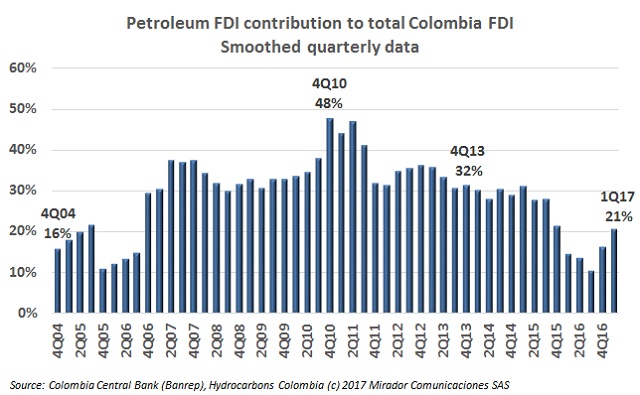The National Government asked La Guajira’s authorities to be accountable for the projects that are being financed in the department with the royalties’ budget, but they failed to comply with this demand. These and other stories in our Royalties periodic summary.

Colombian authorities have been working to boost the oil sector and they have high expectations for offshore projects. There was no clear and complete regulation for the offshore industry but now Ministry of Mines (MinMinas) just published signed one into law.
The offshore potential in the Caribbean Sea are raising expectations in the Colombian coast. Many municipalities and departments are working to attract companies to their territories.
At an event hosted by consulting firm Willis Towers Watson, attorney Carlos Mantilla McCormick, expert on the Colombian energy sector, presented his vision on the Agreement 2.

Colombia’s Central Bank (Banrep) released 1H17 Foreign Direct Investment (FDI) figures for the country. This increased in the oil and mining sector compared to the same period last year, but total Colombia FDI decreased.
The National Hydrocarbons Agency (ANH) announced the date for a new Round, after postponing it a couple of weeks ago for bureaucratic reasons. There has not been a bid round since 2014.
The Colombian Association of Petroleum Engineers (Acipet) hosted a meeting where Martin Kaindl, Director of Institutional Relations of the Argentinean Institute of Oil and Gas (IAPG,) spoke about Argentina’s experience with non-conventional resources. HCC attended the event.
German Arce, MinMinas, talked about the sector situation and the boom of popular referendums in an interview with Semana.
For the first time, representatives of the Oil Workers Union (USO,) the Colombian Association of Petroleum Engineers (Acipet), the Technical Institute of Petroleum and Ecopetrol (NYSE: EC) met in the “Unconventional resources: challenges for Colombia” forum, that took place in Barrancabermeja.
Carlos Mantilla Mc Cormick, former President of the National Hydrocarbons Agency (ANH) spoke about the lack of seismic information and its consequences in the next round.